Topics
Category
Era
Grignon, Antoine (1829–1913)
Antoine Grignon, ca. 1900. Printed in Recollections of Antoine Grignon (Proceedings of the State Historical Society of Wisconsin at its 61st Annual Meeting Held Oct. 22 and Dec. 19, 1913): 110–136. Photograph Collection, Wisconsin Historical Society, Madison. Used with the permission of the Wisconsin Historical Society.
Antoine Grignon was a French Indigenous interpreter and fur trader who lived and worked along the Mississippi River between Prairie du Chien, Wisconsin, and St. Paul, Minnesota. With Ho-Chunk (Winnebago), Dakota, and French roots and a bilingual education, Antoine, like many mixed-race people, was frequently called upon to interpret or negotiate for the US government.
European-Indigenous fur trade families frequently travelled long distances by canoe on the Mississippi, and the Grignon family was no exception. Antoine’s father, Amable, had a trading post near present-day Dakota, Minnesota, a site where Native people had lived for hundreds of years. He counted French traders as well as members of the famed Decorra family, who were Ho-Chunk, among his ancestors. Amable’s wife, Archange LaBathe, sister to Francois La Bathe and cousin to Wabasha III, was French, Dakota, and Ho-Chunk. The couple was married in Prairie du Chien, where Amable worked as interpreter for Colonel Zachary Taylor. Antoine was born there in 1829.
Antoine attended three English-speaking schools and a French school taught by Father Cretin, who later became bishop of St. Paul. By age fifteen, he could read, write, and speak English, French, Ho-Chunk, and Dakota: perfect skills for an interpreter.
Amable Grignon died when Antoine was seven. At the age of fifteen, Antoine began working with the American Fur Company at the Turkey River under Alexis Bailly. Within a year he journeyed to Reed’s Town, also named Trempealeau, where James Reed had a fur post. Reed married Antoine’s mother and Antoine worked for him, describing him as a good and fair man to local Native people. Reed also kept a tavern and inn, whose customers Antoine later described in his memoirs as “a varied company—traders, surveyors, and blanketed Indians.”
Trempealeau (soaking mountain) is a French translation of Hay-nee-ah-cha, the Ho-Chunk name for a rock mound near the confluence of the Mississippi and Trempealeau Rivers. According to Ho-Chunk elder O-kick-chum-hak (Looking Glass), Hay-nee-ah-cha was a sacred place, guarded by timber rattlesnakes. Ho-Chunk people went there for healing and to pray for good harvests.
Wabasha III’s Dakota village, Kiyuksa, was at the site of present-day Winona. Grignon’s memoirs describe mail carriers traveling from Prairie du Chien to Kiyuksa and St. Paul. They made their way by canoe in summer, by horse-drawn sleigh on the winter ice, and by horse on the shore in the spring.
1846 found Grignon back in Prairie du Chien enlisting in the Mexican War in Henry Dodge’s Home Guard. That same year, the US government forced his Ho-Chunk relatives to move from Iowa to an area near what is now Long Prairie, Minnesota. They opposed the order, having lost their own lands in 1837; many hid out in the hills. Although Grignon helped Henry Rice and David Olmstead take many Ho-Chunk to Long Prairie in 1849, he did not reveal those who were in hiding further inland.
While working for Alexis Bailly, trading on the Trempealeau River, Grignon met Mary Christine de la Ronde, who was French as well as part of the Decorra family. Antoine joined the Ho-Chunk at Long Prairie, interpreting at the post of David Olmstead. Mary joined him, and the couple was married in 1851. After settling in Trempealeau, the Grignons went on to have fourteen children, six of whom lived to adulthood.
The US government forcibly moved the Ho-Chunk to Blue Earth, Minnesota, in 1855. Grignon worked there at Nathan Myrick’s trading post until the US–Dakota War of 1862. Although the Ho-Chunk had not participated in the war, they were exiled to South Dakota with the Dakota in its aftermath. Many Ho-Chunk escaped and walked back to their home ravines along the Mississippi.
Grignon found an ally in Dr. Frank Powell, who came to Lanesboro, Minnesota, in 1875. They both worked to benefit the Ho-Chunk. Dr. Powell, a mixed-race man, treated the Ho-Chunk at no cost. In 1881, when Grignon was hired by the US Interior Department to take a census of tribal members for repayment of land from the Winnebago Trust Fund, Powell assisted with the project. Most French Indigenous people were left out of these payments because they lacked the papers to prove they had at least 25 percent Native blood.
Grignon died in Trempealeau, Wisconsin—a canoe ride across the Mississippi from Winona, Minnesota—in 1913.
Bibliography
"Beaver Creek is First Settlement in Trempealeau.” La Crosse Tribune, June 10, 1928.
Boszhardt, Robert, and Danielle Benden. Beneath Your Feet: Archaeology at Trempealeau. Lodi, WI: Driftless Pathways, 2017.
Carl, Pauline Coyle [granddaughter of Antoine Grignon]. Trempealeau Historical Album. Trempealeau, WI: Village Centennial Committee, 1967.
“Dr. Powell Examines Mounds.” Lanesboro Journal, October 9, 1880.
Grignon, Antoine. "Recollections of Antoine Grignon." In Proceedings of the State Historical Society of Wisconsin at its 61st Annual Meeting Held Oct. 22 and Dec. 19, 1913: 110–136. Madison, WI: State Historical Society of Wisconsin, 1914.
http://www.wisconsinhistory.org/turningpoints/search.asp?id=1614
Pierce, Eban Douglas. Papers 1851–1916. Includes letters of Antoine Grignon, 1851–1885. Archives, UW–La Crosse Library. Wisconsin Historical Society, Madison.
Van Schaick, Charles, photog. People of the Big Voice. Madison, WI: State Historical Society of Wisconsin. 2011.
Related Resources
Secondary
Bunnell, Lafayette Houghton. Winona (We-no-nah) and its Environs on the Mississippi in Ancient and Modern Times. Winona, MN: Jones & Krorger, 1897.
https://books.google.com/books?id=N4QUAAAAYAAJ&printsec=frontcover#v=onepage&q&f=false
History of Winona County, 1883. Chicago: H. H. Hill, 1883.
Web
Winona County Historical Society.
www.winonahistory.org
Related Images
Antoine Grignon, ca. 1900. Printed in Recollections of Antoine Grignon (Proceedings of the State Historical Society of Wisconsin at its 61st Annual Meeting Held Oct. 22 and Dec. 19, 1913): 110–136. Photograph Collection, Wisconsin Historical Society, Madison. Used with the permission of the Wisconsin Historical Society.
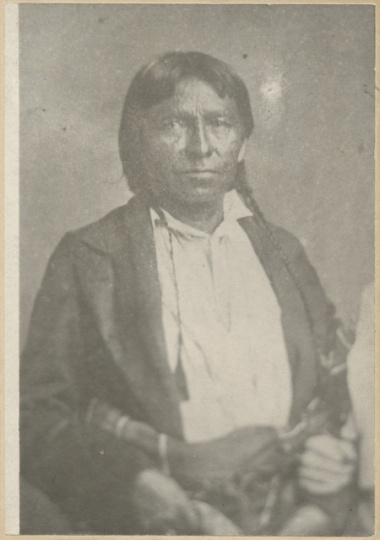
Wabasha III
Public domain
Holding Location
More Information
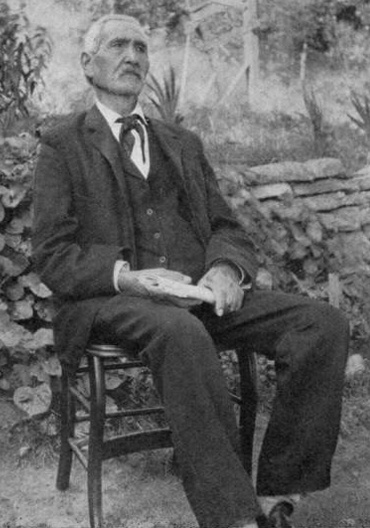
Antoine Grignon
Antoine Grignon, ca. 1900. Printed in Recollections of Antoine Grignon (Proceedings of the State Historical Society of Wisconsin at its 61st Annual Meeting Held Oct. 22 and Dec. 19, 1913): 110–136. Photograph Collection, Wisconsin Historical Society, Madison. Used with the permission of the Wisconsin Historical Society.
Holding Location
Articles
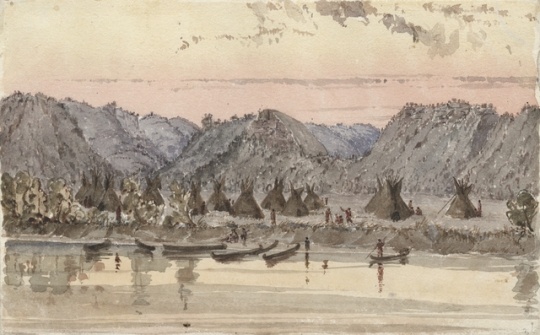
Wabasha's village
Public domain
Holding Location
Articles
More Information
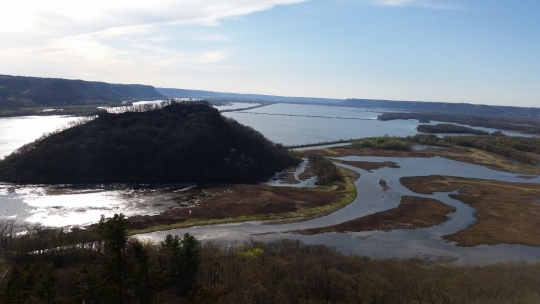
Hay-nee-ah-cha (Soaking Mountain, also known as Trempealeau Mountain)
All rights reserved
Holding Location
Articles
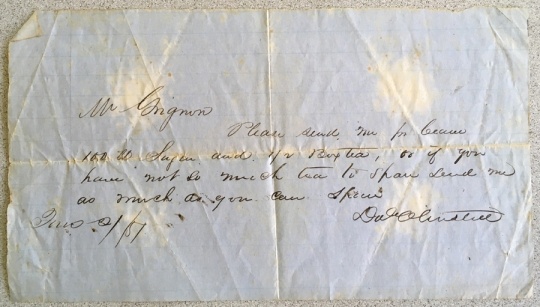
Letter from David Olmsted to Antoine Grignon
Holding Location
Articles
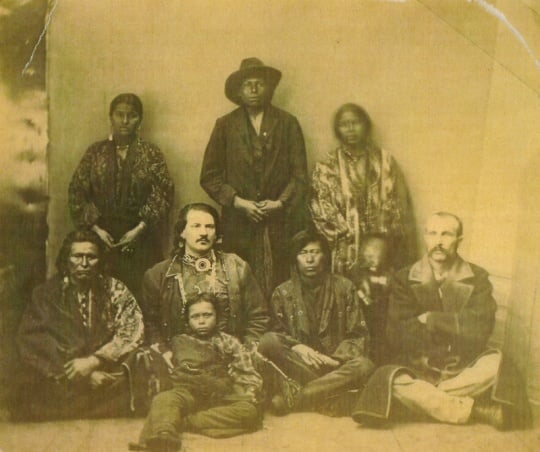
Nop Ska, Dr. Frank Powell, and Green Rainbow
Holding Location
Articles

Wabasha III
Public domain
Holding Location
More Information

Antoine Grignon
Antoine Grignon, ca. 1900. Printed in Recollections of Antoine Grignon (Proceedings of the State Historical Society of Wisconsin at its 61st Annual Meeting Held Oct. 22 and Dec. 19, 1913): 110–136. Photograph Collection, Wisconsin Historical Society, Madison. Used with the permission of the Wisconsin Historical Society.
Holding Location
Articles

Wabasha's village
Public domain
Holding Location
Articles
More Information

Hay-nee-ah-cha (Soaking Mountain, also known as Trempealeau Mountain)
All rights reserved
Holding Location
Articles

Letter from David Olmsted to Antoine Grignon
Holding Location
Articles

Nop Ska, Dr. Frank Powell, and Green Rainbow
Holding Location
Articles

Wabasha III
Public domain
Holding Location
More Information
Related Articles
Turning Point
In 1851 Antoine Grignon begins working at Long Prairie as an interpreter for and liaison with the displaced Ho-Chunk (Winnebago), who are his relatives.
Chronology
1829
1841
1845
1846
1850
1851
1857
1881
1912
1913
Bibliography
"Beaver Creek is First Settlement in Trempealeau.” La Crosse Tribune, June 10, 1928.
Boszhardt, Robert, and Danielle Benden. Beneath Your Feet: Archaeology at Trempealeau. Lodi, WI: Driftless Pathways, 2017.
Carl, Pauline Coyle [granddaughter of Antoine Grignon]. Trempealeau Historical Album. Trempealeau, WI: Village Centennial Committee, 1967.
“Dr. Powell Examines Mounds.” Lanesboro Journal, October 9, 1880.
Grignon, Antoine. "Recollections of Antoine Grignon." In Proceedings of the State Historical Society of Wisconsin at its 61st Annual Meeting Held Oct. 22 and Dec. 19, 1913: 110–136. Madison, WI: State Historical Society of Wisconsin, 1914.
http://www.wisconsinhistory.org/turningpoints/search.asp?id=1614
Pierce, Eban Douglas. Papers 1851–1916. Includes letters of Antoine Grignon, 1851–1885. Archives, UW–La Crosse Library. Wisconsin Historical Society, Madison.
Van Schaick, Charles, photog. People of the Big Voice. Madison, WI: State Historical Society of Wisconsin. 2011.
Related Resources
Secondary
Bunnell, Lafayette Houghton. Winona (We-no-nah) and its Environs on the Mississippi in Ancient and Modern Times. Winona, MN: Jones & Krorger, 1897.
https://books.google.com/books?id=N4QUAAAAYAAJ&printsec=frontcover#v=onepage&q&f=false
History of Winona County, 1883. Chicago: H. H. Hill, 1883.
Web
Winona County Historical Society.
www.winonahistory.org







